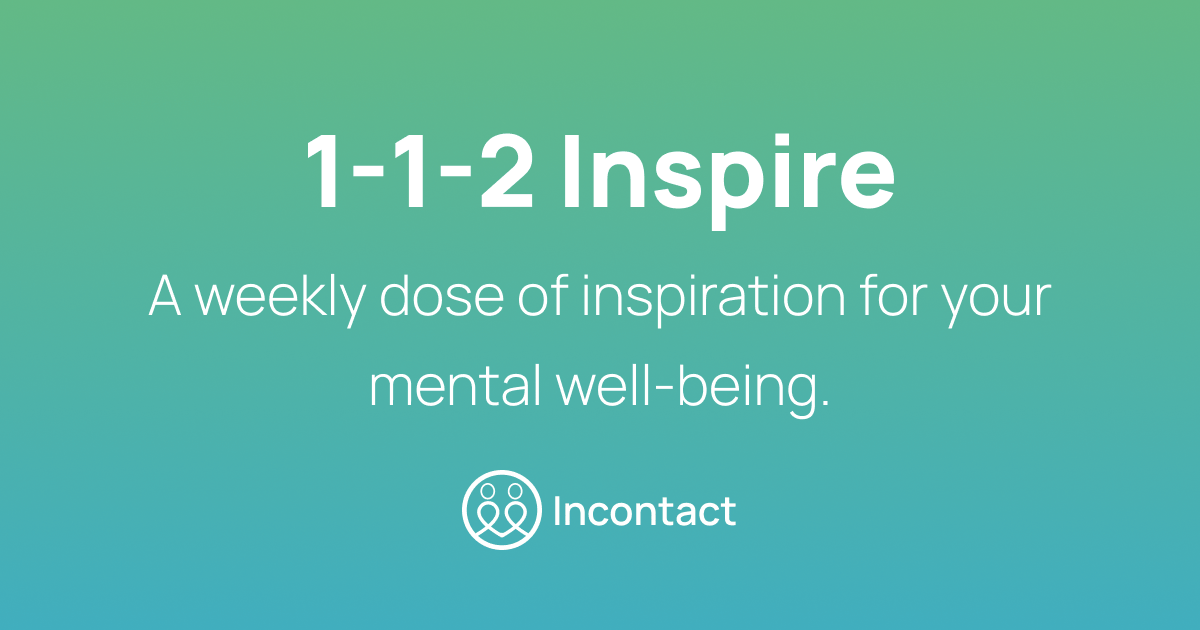- 1-1-2 Inspire
- Posts
- 1-1-2 Inspire: The myth of fixed personality
1-1-2 Inspire: The myth of fixed personality
Edition #15

Hi there, I’m Aarti, Founder and Lead Counsellor at Incontact. This is our 15th edition. Welcome to 1-1-2 Inspire! In therapy, I often hear people say things like: "I’ve always been this way”, “I’m just not the confident type”, and “That’s just who I am.” There’s comfort in these declarations. They sound definitive. But they can also be traps. What if the person you believe yourself to be—shy, passive, avoidant, impatient—isn’t fixed at all? What if personality is more like a habit than a birthmark?
In this edition, we’re unpacking the quiet revolution happening in psychology: your personality is not your prison.
Here’s 1 story, 1 takeaway, and 2 tips to break the prison of fixed personality.
1 Story—Outsmarting your personality
(Name changed and case simplified below to protect confidentiality and focus on the core insight.)
When Sophie first came to therapy, she described herself as a “classic avoidant”. She avoided conflict, hesitated to speak up even when she disagreed, and held herself back from leadership roles—despite secretly wanting them. “I’ve always been like this,” she said. “I just don’t have it in me to be bold.”
Her internal narrative was this: “I’m not someone who can handle intensity.”
But the life she wanted required just that—handling intensity. Leading a team. Having difficult conversations. Showing up fully in her marriage.
What she called her “personality” wasn’t fixed—it was a survival strategy. Sophie grew up in a household where speaking up led to tension, not resolution. Over time, she learned to stay quiet, agreeable, and invisible in moments of stress. This wasn’t her nature—it was her adaptation.
She didn’t lack awareness. What she lacked was permission—to outgrow the person she thought she was.
Therapy wasn’t about pushing her to become someone else. It was about helping her reconnect with the parts of herself she had sidelined: her voice, her instincts, her desire to lead. We treated her so-called traits not as hardwired truths, but as learned responses—habits she could question, interrupt, and shift.
Was it easy? No. But here’s what changed:
Sophie stopped asking, “Is this me?” 🚫
And started asking, “Is this helping me?” ✅
That shift in question made all the difference. It gave her room to experiment. She practiced speaking up in small ways, with people she trusted. She sat through the discomfort of being misunderstood and realised she could survive it.
She began choosing actions that aligned with her values, not just her comfort zone.
Sophie didn’t magically become fearless. But she no longer let her past shape her future. The biggest transformation wasn’t about becoming a different person—it was about reclaiming who she had always been, beneath the fear.
Her story is a reminder that your personality isn’t a prison. It's a path—and you get to take the next step, even if it surprises you.
1 Takeaway—You don’t have to be “authentic” all the time
The modern obsession with authenticity can be misleading.
Sometimes what we call “authenticity” is just familiarity. It’s not the real you—it’s the rehearsed you.
Growth, by definition, requires stepping out of familiar traits and into uncomfortable territory. You’re not being inauthentic when you act more confident, more patient, more open than usual. You’re training a different version of you.
Authenticity is a moving target. It’s not who you’ve been—it’s who you’re becoming.
2 tools to loosen the grip of old personality labels
Replace identity statements with behaviour statements
Instead of “I’m just not a risk-taker,” try: “I find risk-taking uncomfortable, but I’m willing to practice it in small doses.”
This subtle shift keeps the door open for change—and stops you from locking yourself into a fixed trait.
Create “mini experiments” in personality expansion
Choose one trait you’ve labeled yourself with (e.g., “I’m bad with people”).
Design a 10-minute experiment that challenges this label. Example: Join a casual conversation, ask a question in a meeting, say no to something politely.
Reflect not on how natural it felt—but on whether it moved you closer to the life you want.
You are not a static personality. You’re a set of evolving patterns, shaped by your history—but not bound by it.
The question is no longer, “Is this who I am?”
It’s, “Who do I want to become—and what’s one small way I can show up as that person today?”
Warm wishes,
Aarti
Reply